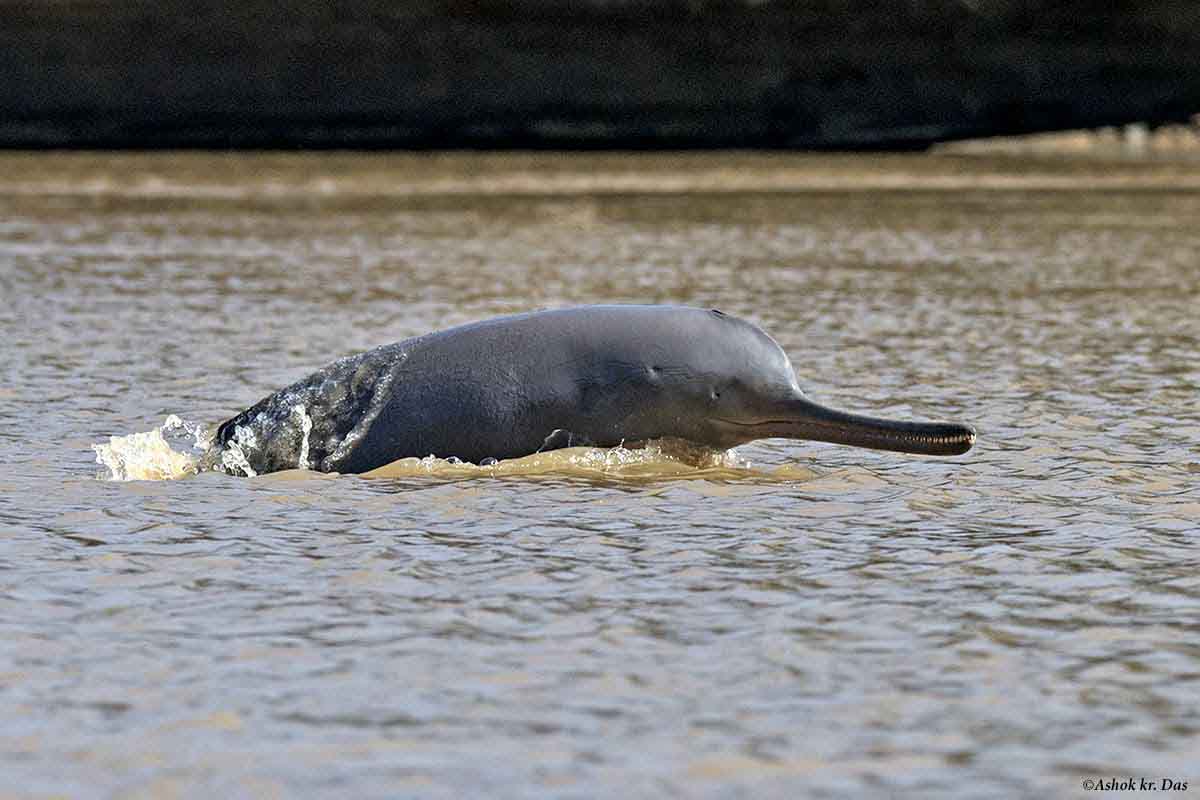Jahan-e-Khusrau: PM Modi to attend 25th sufi music festival in Delhi
Jahan-e-Khusrau, an international Sufi music festival, celebrates its 25th anniversary in Delhi with global artists honoring Amir Khusrau's legacy.
Wildlife experts and lovers are pleased by this announcement made by the PM that would also mark the presence of Ganges Dolphin in Western Uttar Pradesh.

The upper Gangetic stretch is known for fresh water dolphins. (Image: Facebook/@Ashoks-Wildlife-Photography)
Followed by the announcement of Prime Minister Narendra Modi in his Independence day speech on Saturday, ‘Project Dolphin’ would be introduced on the lines of ‘Project Tiger’ under which highly endangered Ganges Dolphin would be conserved in an organised manner.
Ganges Dolphin, a National Aquatic Animal, is a highly endangered freshwater aquatic species. It is one of the four freshwater river dolphin species existing in the world.
Advertisement
Wildlife experts and lovers are pleased by this announcement made by the PM that would also mark the presence of Ganges Dolphin in Western Uttar Pradesh.
Advertisement
“The hard work of 30 years has yielded result,” said Dr Sandeep Behera, consultant biodiversity Namami Gange project of Government of India. Expressing happiness on this announcement, Dr Behera said that this decision would give a momentum to the conservational activities for Ganges Dolphin. Dr Behera is a well-known name in the conservation of Ganges Dolphin.
Ganges Dolphin is found in the upper Gangetic stretch in the Hastinapur wildlife sanctuary area in Western UP in a 168 kilometre stretch between the two barrages of Bijnore and Narora of Meerut Division. On 8 November 2005, a part of this stretch from Brijghat (Hapur district) up to Narora (Bulandshahr district) was declared a Ramsar site, that was a first in UP. Ramsar is a city in Iran where a treaty was signed in 1971 for the conservation and sustainable use of wetlands.
According to 2019 dolphin census, 34 plus dolphins were found in this stretch of the Ganges between Bijnore and Narora barrages. This number was 22 in 2015 and ever since there has been a gradual increase in the dolphin population.
Ganges Dolphin was declared National Aquatic Animal of India in 2009 but its conservation had started long back at an individual level. “Ganges Dolphin which is called ‘Susu’ here because of the whistling sound it makes has been facing manifold threats,” said Dr JC Pant, Vice President of ‘ Saviours’, an NGO working for the conservation of Ganges since 2005. Project Dolphin would definitely help in the conservation of these river dolphins that are highly endangered and hardly 3000 are left in our country, he said while appreciating this move of the PM.
River dolphins are on the top of the riverine ecosystem and are reliable indicators of the health of the river ecosystem. They are found in just four river systems of the world viz Amazon (USA, where it is found in good numbers), Yangtze (China, where it is almost extinct), Indus (Pakistan, where its population is about 1000) and Ganges (India). In India, its current population is about 3000.
“We hope that Project dolphin will fill a new life in the conservation of Ganges Dolphins,”, averred Dr Pant.
Meanwhile, the Wildlife Institute of India (WII) has already started working on Project Dolphin. WII in Dehradun has been given the responsibility of preparing the project by the Union government. Dhananjya Mohan, director of WII said that they have started working on ‘Project Dolphin’ that would be prepared considering each and every aspect of its conservation.
It is believed that when the Ganges came down on earth, the dolphin was one of the creatures that heralded it. It has mythological importance and has references in Hindu religious texts where it is referred to as ‘Shishumaar’. It was discovered in 1801 in Hoogli river by William Roxberg.
Ganges dolphins have grey-brown smooth skin and are blind by birth. Their eyes are without lenses and can differentiate between light and dark only. They are mammals and prey in water with the help of sonar system. They give birth once in two to three years to just one calf hence their population growth is slow.
The most common threats to these river dolphins are the construction of dams on rivers, use of nylon nets by fishermen, pollution, riverbank farming in which pesticides are used and poaching for their blubber from which oils and fat are extracted.
Advertisement